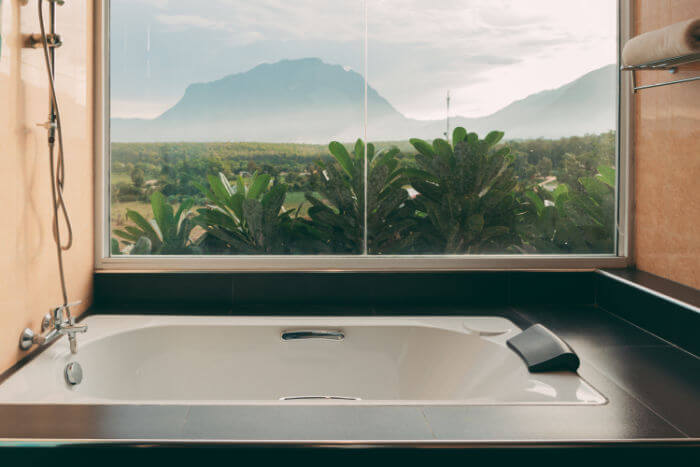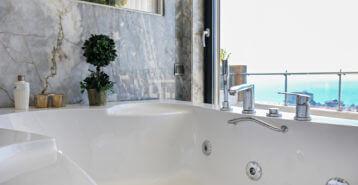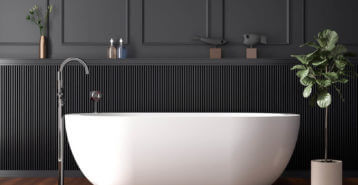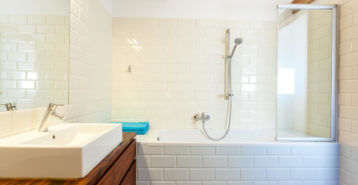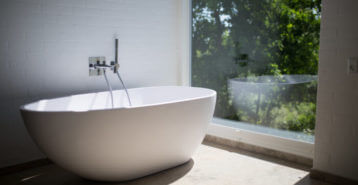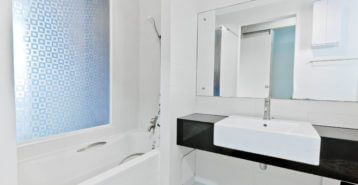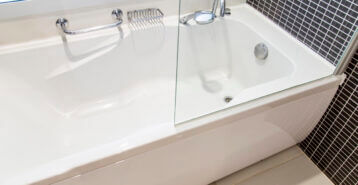Drop-in tubs have gained popularity for their sleek design and versatile options. In this comprehensive guide, we’ll delve into what drop-in tubs are, their types and styles, surround considerations, sizes, and cost factors to help you make an informed decision for your bathroom remodel.
What is a Drop-in Tub?
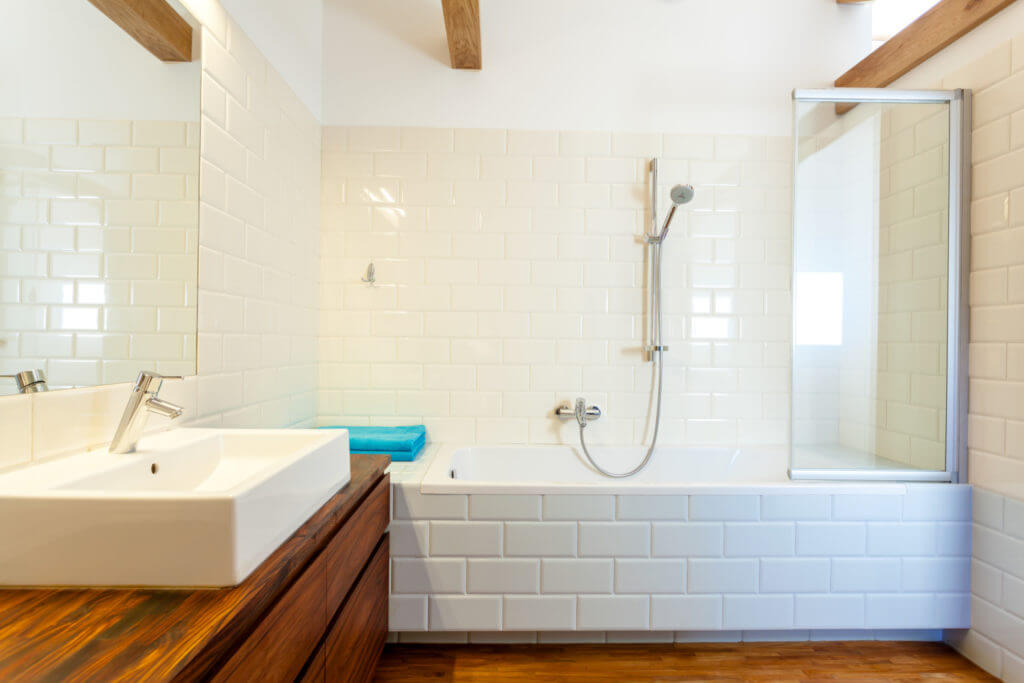
A drop-in tub is a bathtub design where the tub is “dropped in” to a pre-built frame or surround, making the rim of the tub flush with the surrounding area. It is sometimes also called a “platform tub” or “built-in bathtub.” These tubs have a clean, integrated look that stands apart from more traditional freestanding or alcove tubs. The flexibility in design and installation also means it can be a focal point in your bathroom.
Are Drop-in Tubs Good?
Yes, drop-in tubs are an excellent choice. But that does not mean they will be the perfect tub for everyone. Let’s take a look at the reasons many homeowners choose a drop-in tub, as well as some characteristics that may mean this is not the right tub for you.
-
Pros
- These tubs can use many different materials and designs
- Come in several sizes and shapes
- The tub you choose to drop into the surround can be almost anything
-
Cons
- They require more space and may not fit in every bathroom
- Costs are higher than many other tub types
- Not good for those with mobility or accessibility requirements
We’ll break all of these down below.
Why to Choose One
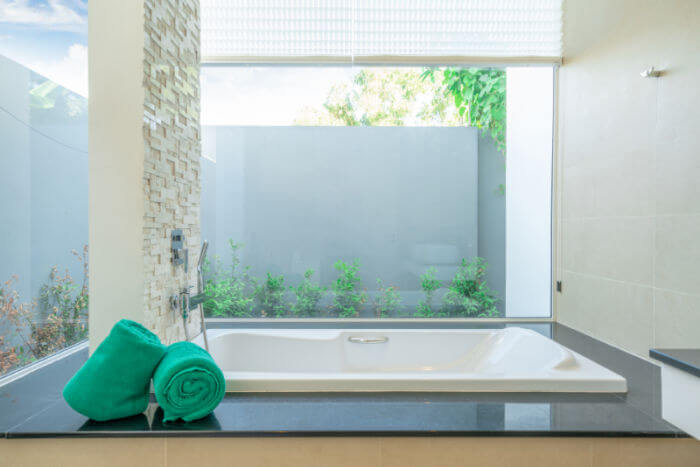
Drop-in tubs are excellent for many reasons, including the following:
- Design flexibility. Drop-in tubs can be installed in various finishes and can be surrounded by different materials like tile, stone, or wood. The surround in particular creates a natural focal point for your bathroom, and it can be extended to add a space for soap, shampoo, towels, or whatever else you need stored.
- Size and shape options. Drop-in tubs come in several shapes, including rectangular, oval, and corner designs. That means you have options to fit whatever your bathroom layout may be.
- Add-on features. Many drop-in tubs offer features like armrests, lumbar support, and even options for whirlpool jets, enhancing the bathing experience.
Considerations Before You Commit
There are some homeowners or bathrooms that a drop-in tub is not suitable for.
- Space requirements. They often require more space than standalone tubs due to the need for a surround.
- Costs more than other tubs. The cost can be higher when factoring in the tub itself and the construction of the surround. Typically, drop-in tubs require more carpentry and tiling work than other tub types.
- Not accessibility friendly. Unlike some freestanding tubs, drop-in tubs usually have higher walls, which might be a consideration for accessibility.
Drop-in Tub Cost
Cost is a significant factor and varies based on the tub type, size, material, and installation complexities.
The cost to install a drop-in tub will vary depending on the material and size of the tub you select. As noted in the materials section, prices start as low as $600 and can go as high as $5,000+ for higher-end models.
Let’s look at what is involved in that cost.
Tub Cost
A standard-sized drop-in tubs with jets added would cost around $1,200 to $1,500. However, you can find a smaller tub with no added features for under $1k.
Labor Cost to Install Tub Surround
Installation costs depend on the complexity of the job and local labor rates. It can range from a few hundred to a couple of thousand dollars.
- Basic installation. For a straightforward project using standard materials like acrylic or basic tiles, labor costs might range from $500 to $1,500.
- Moderate complexity. If the project involves moderate complexity, like mid-range tiles or a larger surround area, the cost could be between $1,500 to $3,000.
- High-end installation. For high-end materials like marble or custom designs, the labor cost can exceed $3,000, depending on the intricacies of the work.
In addition to how complex the installation is, your labor cost will also depend on local rates, how challenging the surround material you’ve chosen is to work with, and the overall size of the surround.
Additional Costs
Don’t forget to factor in plumbing, hardware, and potential bathroom modifications to accommodate the new tub.
You can read our guide to bathtub replacement cost for more information.
Drop-in Tub Types and Styles
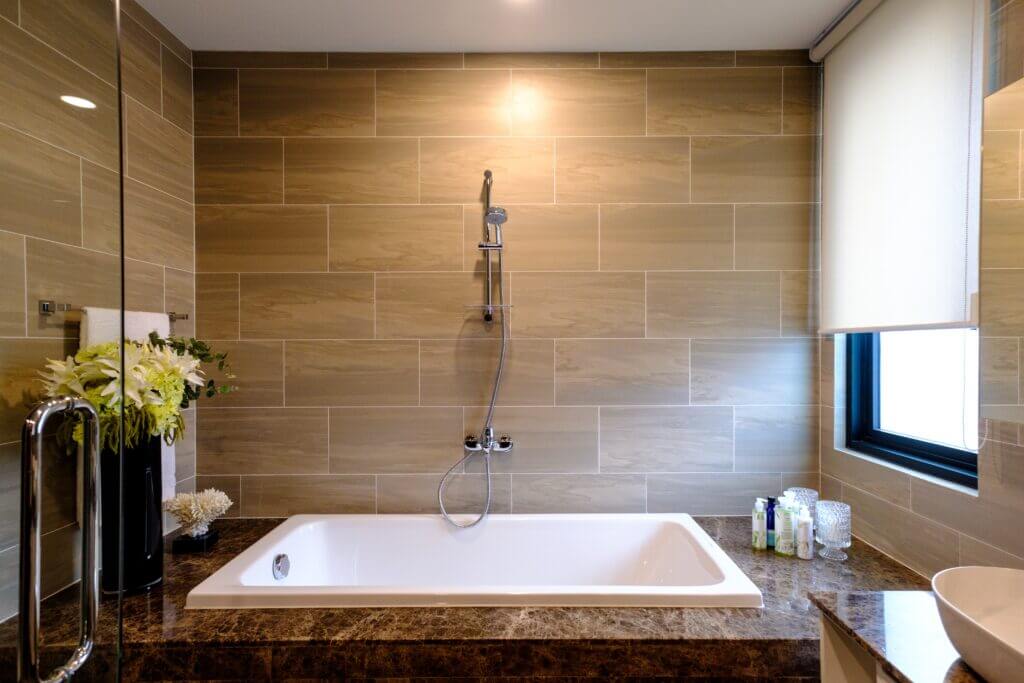
Drop-in tubs come in various types and styles, catering to different preferences and bathroom layouts:
- Drop-in tub shower combo. Ideal for those who want the best of both worlds – a full drop in tub with a shower option. It’s a practical choice for smaller bathrooms. You can learn more about tub shower combos by visiting our guide.
- Drop-in jetted tub. These tubs come equipped with jets that provide a relaxing massage effect. They are perfect for those seeking luxury and comfort. Our guide to jetted tubs can tell you more.
- Drop-in soaking tubs. Deeper than standard tubs, they allow for full-body immersion, offering a serene and calming bathing experience. We have a guide to soaking tubs that can answer all your questions about this tub type.
- Corner tubs. These are space-efficient and can add a unique aesthetic to your bathroom layout.
- Oval, rectangular, and custom shapes. Depending on your space and style preference, drop-in tubs can come in various shapes, including the classic oval, a more contemporary rectangle, or custom designs.
You can read our full guide to types of bathtubs if you want to check out all of your options.
Drop-in Tub Surround
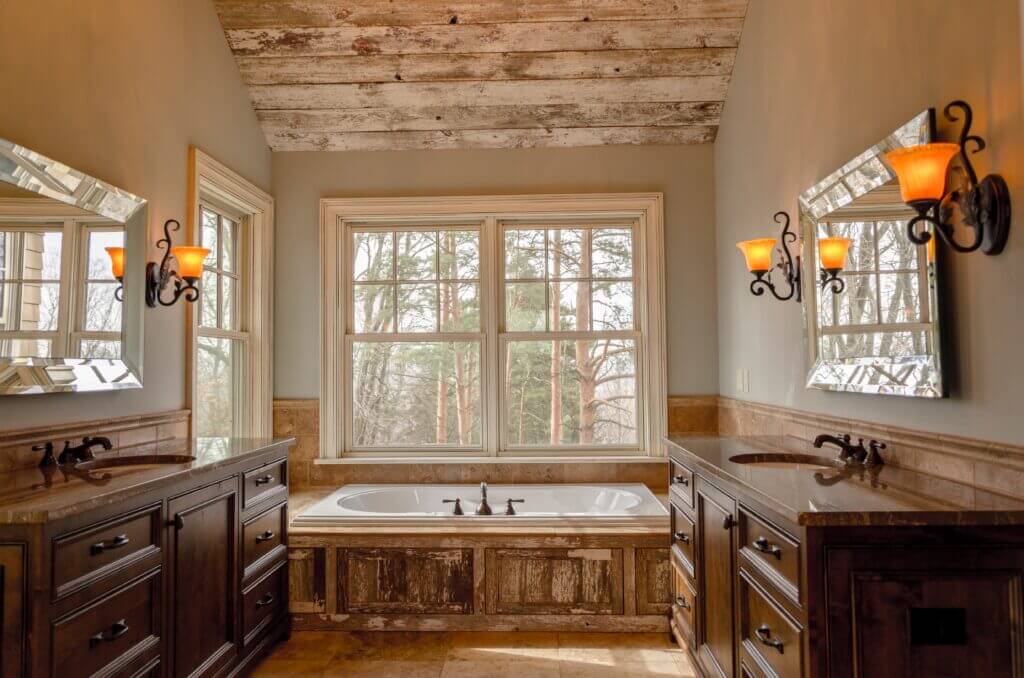
The surround not only supports the tub but also adds to the overall aesthetic. The exact color and style of surround you choose will depend on whether you’re going for a warm, rustic look like the photo above or something sleek and modern, as well as what’s in your budget. Here’s what to know.
Best Materials
The most popular materials for a drop-in tub surround include tile, granite, marble, and acrylic.
- Tile offers endless design possibilities. We recommend using a ceramic or porcelain tile, but color, shape, and size can be tailored to your style.
- Granite is durable and comes in many colors and styles.
- Marble brings a luxurious feel but may need more maintenance and care than other materials on this list.
- Acrylic is a budget-friendly and easy-to-maintain option that still offers a polished, finished look.
In addition to the material you pick for your surround, you should also consider your options for bathtub materials.
What is the Minimum Surround for a Drop-in Tub?
The surround size depends on the tub dimensions and bathroom layout. Typically, there should be at least a few inches of ledge around the tub. Contractors will usually suggest accommodating for at least six inches on all sides of the tub. But in reality, the specifics will hinge on your unique bathroom and any applicable building codes in your area. Ask your contractor what they recommend.
Drop-in Tub Sizes
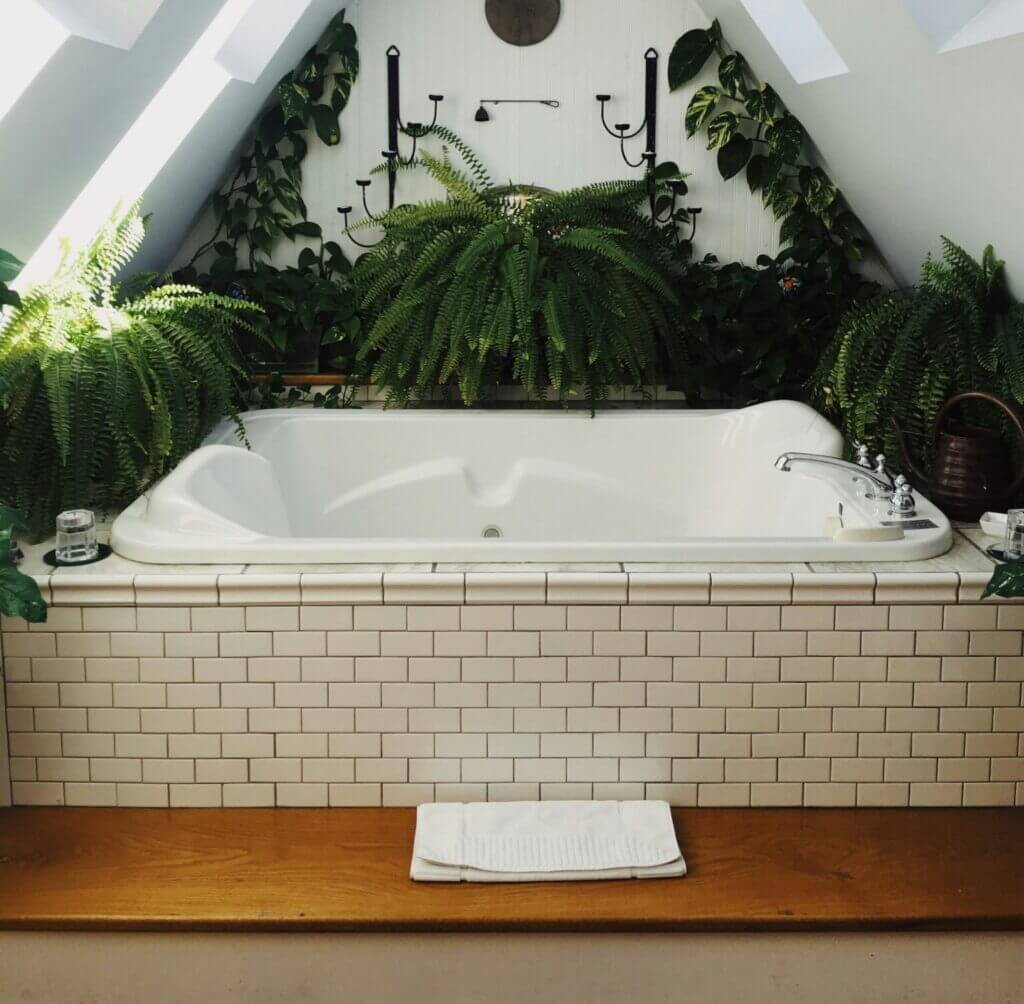
The average dimensions of a drop-in tub are about 60 inches long by 32 inches wide and 20 inches deep. On average, they have slightly more depth than a standard tub – 20 inches versus the standard tub’s 18 inches. However, sizes vary widely, typically ranging from:
- Small tubs, which are around 45 inches in length, and are suitable for compact spaces.
- Standard tubs, which are approximately 60 inches long, fitting most standard bathrooms.
- Large or custom tubs, which can exceed 72 inches or be custom-made for specific requirements.
How Do Drop-in Tub Sizes Compare to Other Tub Types?
Here’s a quick look at how drop-in tubs compare to two of the most popular tub styles: an alcove tub and a soaking tub.
| Tub Style | Standard depth |
|---|---|
| Standard alcove bathtub | 18 inches |
| Drop-in tub | 20 inches |
| Soaking tub | 24 inches |
Remember that you can actually have your drop-in tub installed in an alcove, and you can choose a soaking tub depth to be “dropped into” your surround. But if you want to look at standard depths, drop-in tubs tend to come in the middle, with alcove tubs being slightly shallower and soaking tubs being slightly deeper.
You can read our guide to bathtub sizes for more information.
Are Drop-in Tubs Right for You?
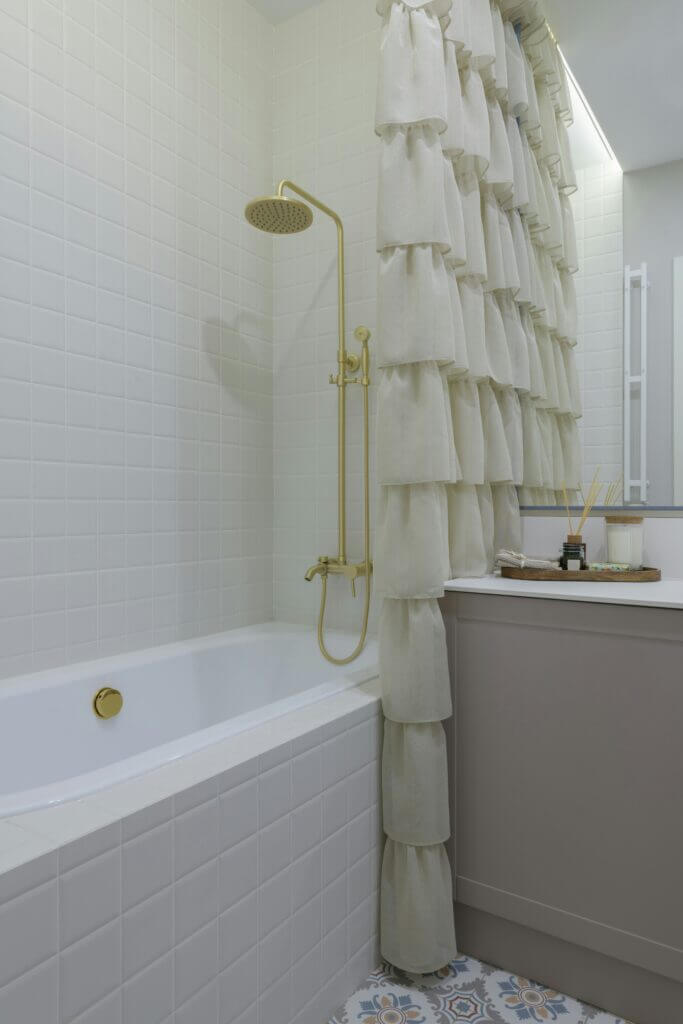
A drop-in tub can be a fantastic addition to your bathroom, offering a good blend of style and functionality. By understanding the different types, styles, surround requirements, sizes, and costs, homeowners can make a choice that suits their budget and lifestyle while adding value to their home. Our bathtub remodeling guide can help you find all the information you need.
Remember, consulting with a bathroom remodeling professional can provide personalized advice and ensure a successful installation. You can browse our contractor directory to see the pros available in your area and to request free quotes.
If you’d rather have us do the research for you, then click below and answer a few questions about your project. We will then match you with up to four contractors.
